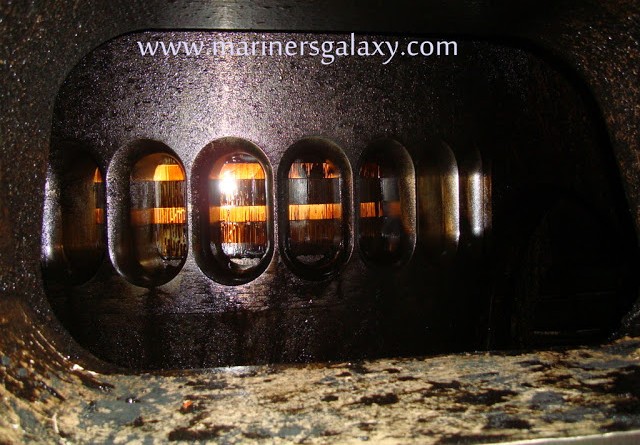Scavenge Space Fire reasons, detection and actions will be discussed in this article in a thorough details. Scavenge space fire can seriously damage the engines and also will hamper in the working of the same. Such fires should be avoided in any case and same can be done by following simple practices.
Scavenge space, as we know, is an enclosed space under the piston of the engine. Stuffing box on down side and piston on top makes it a closed space. And fresh pressurized air is continuously fed into this space. Accumulation of unburnt carbon and lubrication oil is common and with presence of fresh air all the time, this make it a ideal space for a fire in case there is a heat source available. We are going to discuss all the three parts like reasons, detection and actions.
Read this: Main Engine Alarms and Slowdowns
Scavenge Space Fire
Since such space always have unburnt carbon residues which can be fuel or lube oil, any contact with the heat source in presence of fresh air will lead to a fire. Heat sources can arise from different reasons which we will discuss later in this article.
Scavenge Space Fire Reasons
These are the reasons but not limited to them:
Blow By: Caused due to broken piston rings, worn out piston rings, excessive wear on the liner. Insufficient lubrication causing scoring of liner. If the Piston rings are sticky, then it will allow the combustion gases to pass through the Piston space. This will lead to increase in the chances of heat available for fire in the scavenge space.

Overheated Piston: This can be because various like the fuel injection system is faulty or fuel injector is dripping. Also if the coolant for the piston is insufficient or less, it will lead to overheating of the Piston. This will make the Piston running at higher temperature and making it a hot spot for causing fire. If the unburnt carbon comes in contact with under side of the piston, it will lead to fire.
Exhaust Gases Blow Back: Exhaust gases if they make their way into scavenge space through the air intake ports, it will be at higher temperature and will lead to fire. This kind of event happens when the turbocharger is surging.
Air cooler failure will lead to high temperature air to reach the scavenge space and leading to fire.
Scavenge Fire Detection
Following events which are mentioned below shows a scavenge fire:
- The RPM of the engine will fall as it will not able to generate enough power as lack of fresh air and hence no combustion in one of the units.
- Exhaust temperature of the affected unit will rise considerably. And high exhaust deviation will be seen.
- There will be Sparks and flames coming out of the drains of the scavenge space drains.
- Turbocharger RPM will not be stable and thus, it will have erratic operation.
- The temperature of the coolant leaving the unit will be higher and it is way above the normal limits.
- Heavy Black Smoke coming from the funnel of the ship. And if the fire gets worse, it will keep on getting worse, like very dark and heavy smoke.
- The boundary of the particular unit will be higher in temperature and the temperature gauges will show higher readings.
Actions to be taken during such Fire
The actions to be taken will depend on the extent of fire and can be limited to one unit or all the units.
Below article will you give you an insight about the actions to be taken in case of fire.



